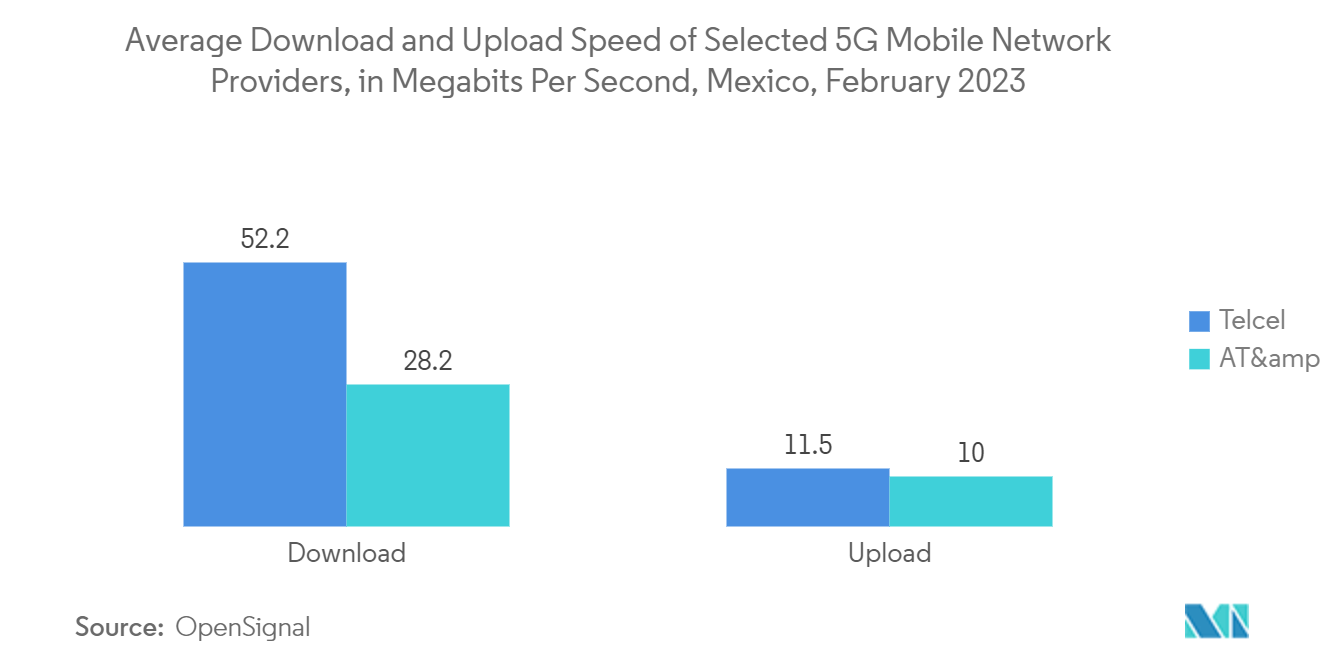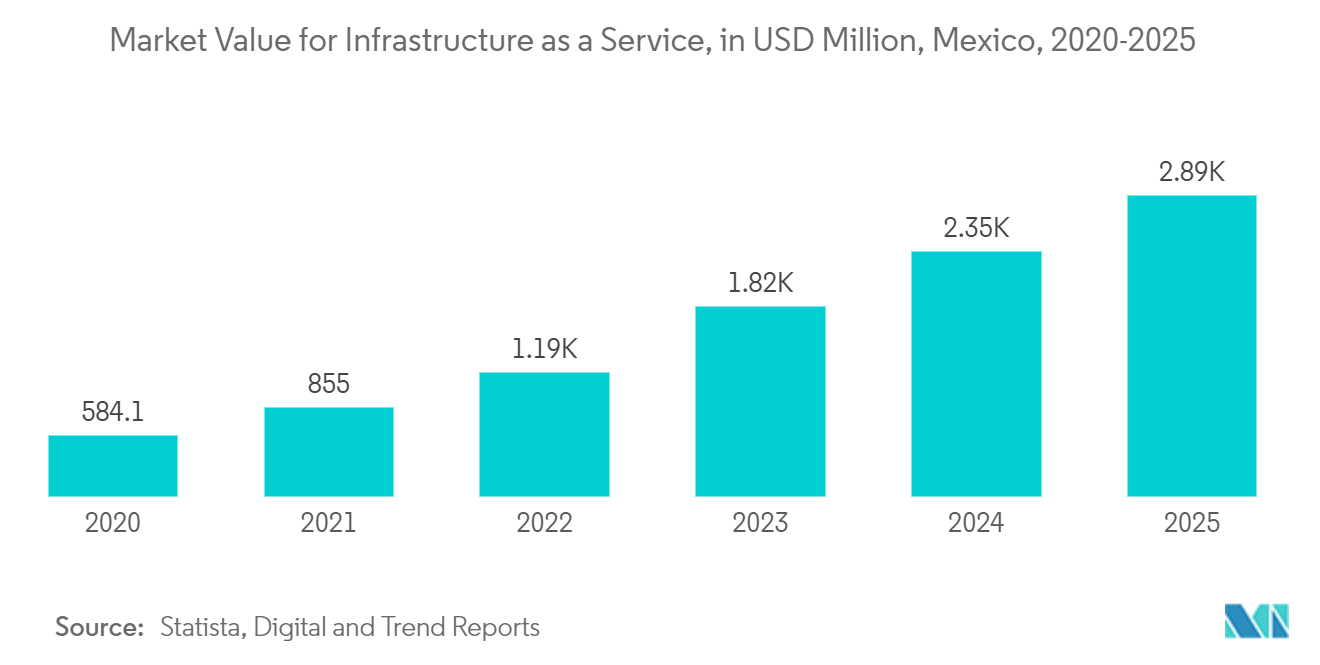Market Trends of Mexico Data Center Storage Industry
IT and Telecom to Hold Significant Share
- The rollout of 5G networks is expected to strengthen the nation's digital economy and increase demand for high data center storage infrastructure. The arrival of 5G is expected to bring a major increase in speeds, low latencies, and an unforeseen level of network capabilities. This will set the stage for even more advanced and novel applications, enabling everything to be more connected in real time.
- 5G and high-speed flash storage are enabling emerging IoT use cases, leading to major market demand. As of April 2023, more than 68 million Telcel prepaid users were able to access the 5G Network with greater coverage throughout the country, with the benefits of the new technology being available to more than 80 million Telcel customers.
- The Mexican government intends to encourage internet connectivity across the country. The government announced a USD 400 million program to provide internet access across the country. The CompuApoyo initiative aims to encourage more Mexicans to use computers and the internet by bridging the so-called digital divide. This initiative aims to give every family in the nation access to a broadband connection, and the government is also expected to make computers and broadband services available to low-income families. The objective of CompuApoyo is to install computers and internet connections in 1.7 million homes.
- The demand for NVMe is increasing for SSD servers and storage appliances, which is expected to drive the market during the forecast period. This communication interface and driver provide a command set and feature set for PCIe-based SSDs with the objective of efficient performance and interoperability across a wide variety of corporate and client systems.

All-flash Storage to Hold Significant Growth
- All-flash arrays are evidently revolutionizing data center storage, offering cloud-like application consolidation and enhanced agility. The growth in data generated by the enterprise, coupled with the growing adoption of cloud technology, is expected to drive the country's market. Google has been investing in Latin America over the last 17 years, renewing its digital transformation with a five-year, USD 1.2 billion commitment to the Mexican market.
- With big data and analytics, data access and processing patterns demand higher storage performance and increased concurrency (big data aggravates data mobility issues). The NVMe-based SSD is gaining traction in the market studied. In Mexico, there is a rise in demand for big data developers.
- Further, with such enhanced capabilities, the NVMe is expected to support storage-class memory (SCM) products, like 3D Xpoint, to build SSDs faster than what is being offered currently on NAND drives.
- Fiber channels can be used to transport data from storage systems that use solid-state flash memory storage medium by transporting NVMe protocol commands. Due to the digital trend taken by government organizations, network connectivity is projected to expand, leading to growth in market demand. The Mexican government launched Red Troncal in 2018 as part of its goal to construct a "backbone network" across the country using up to 25,000 km of fiber.


